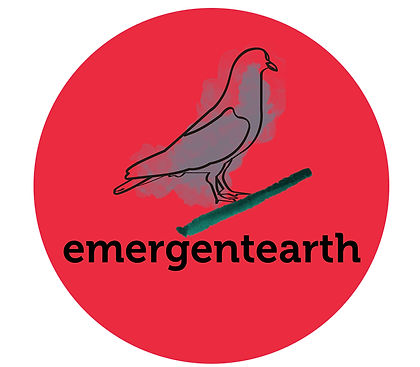top of page
an emergent
website design
by
peter jay stein, md, ma
atmosphere
asthenosphere
lithosphere
regolith
biosphere
hydrosphere



This 54 page synopsis of the evolution
of the Earth, the origin and progression of life, and the
emergence of humans as descendants of the hominin lineage, divides the last 4.57 billion years into progressively overlapping, imagistic, time segments, to outline our place in biological existence.
magnetosphere
ionosphere
TWENTY-NINE
Emergent Humanity -
Three Phases:
comprising the Miocene, Pliocene, and Pleistocene epochs
adapted from: The Last 2 Million Years of Human Evolution, Stringer, C., Royal Society of London, youtube, 2013;
Human Evolution 150 Years After Darwin, Lieberman, D., Leakey Foundation. youtube, 2014;
and Essentials of Physical Anthropology, Jurmain, R., et al, 2016/2017, pp. 199-284.
I) Early phase: Pre - Australopiths
7 mya - 4 mya - Central and East Africa
still relatively ape-like
arboreal/terrestrial
?origin of tool use
at least 8 Australopithecine species
7 - 6 mya: sahel man, "Toumai"........Sahelanthropus Tchadensis
6.2 - 5.6 mya: Tugen Hills man.........Orrorin Tugenensis
5.8 - 5.2 mya: ancient father.............Ardipithecus Kadaba
4.7 - 4.5 mya: "Ardi"............................Ardipithecus Ramidus
II) Australopithecine phase: 4 mya - 2 mya
"Taung Child"
3.3 - 2.1 mya
Australopithecus Africanus
1925: Raymond Dart
upright walking
head held like humans
small canines
earliest biped
Toros-Menalla site, Chad, Africa
foramen magnum is more forward, and points downwards, not backwards,
as spinal column becomes perpendicular to the ground
still small, ape-like braincase (<400 cc)
canines become smaller,
as molars (cheek teeth) enlarge
III) Human phase: 2.4 mya - 200,000 ya
effect of climate change:
every 100,000 years -
warm vs cold
aridity vs precipitation
small ice caps vs large ice caps
last 800 k - increasingly severe climate swings
last 12 k - inter-glacial warming phase
"Handyman" & "Toolmaker"
2.4 - 1.6 mya
H. Habilis
earliest genus "Homo"
fossils resemble human skeletons
"Turkana Boy"
1.8 - 0.05 mya
H. Erectus
out of Africa around 1.8 mya
fossils found in Dmanisi
found in Java
- prominent brow ridge, large face, skull long and low, no chin
2.4 - 1.6 mya: Homo habilis - "toolmaker: earliest genus "Homo".
Fossils resemble the human skeleton
1.9 - 1.5 mya: Home ergaster - becomes H. erectus after leaving Africa; Nariokotome Boy
Homo georgicus
1.8 - .05 mya: Homo erectus -Turkana Boy
- prominent brow ridge, large face, skull long and low, no chin
- out of Africa, around 1.8 mya
- arrives in Europe, 1.5 mya
1.2 - 0.5 mya: Homo antecessor - "Pioneer Man" - possible cannibalism (800K)
0.6 - 0.2 mya: Homo heidelbergensis - lineage possibly diverged into H. Sapiens and Neanderthal 0.37 mya
- 1907 -1908 Heidelberg jaw found and published by
Otto Schoentensack
0.4 - 0.3 mya: Homo neanderthalis
Homo floresiensis
0.2 - 0.0 mya: Homo sapiens: exits Africa 200 kya
possible descent from H. heidelbergensis
enters Middle East 100 kya
enters Asia 60 kya
enters Europe 40 kya
enters the Americas 30 kya
"Nariokotome Boy"
1.9 - 1.5 mya
H. Ergaster
becomes H. erectus after leaving Africa 1.8 mya
9 y/o from Kenya
most complete early human skelton
first to use complex tools and fire
"Pioneer Man"
1.2 - 0.5 mya
H. antecessor
possible cannibalism (800K)
"Broken Hill skull"
1921: Tom Zwiglaar
dated 0.3 - 0.125 mya
Zambia, Africa
in the Kabwe limestone caves
the first, early human fossil ever discovered in Africa
demonstrates the centrality
of Africa
for human evolution
Homo heidelbergensis
0.6 - 0.2 mya
representative of
Middle Pleistocene
780 kya - 125,000 kya
hominins of
Africa and Europe,
in contrast to those of Asia
abundant fossil find in Northern Spain
(Sima de los Huesos)
split into
H. Sapiens and Neanderthal
0.37 mya
0.2 mya - to present
H. Sapiens
there follows globalization of several species
with continued encephalization
(although Neanderthal has a larger brain)
final cephalic/head anatomical changes:
braincase becomes more spherical and globular
forehead becomes steeper
face is less protruding, and shifts below braincase
enlargement of temporal lobe:
language, creativity, innovation
accompanies development of
temporal lobe
and
vocal apparatus
increased (omnivorous) dietary range means
energy-rich foods
increased behavioral complexity
includes explosion in
art, language, intelligence, cooking, and tool innovation
endurance athletes in heat
good breeders: females can conceive every 3 - 4 years
brain growth from birth requires 6 more years
"Lucy"
3.7 - 3.0 mya
Australopithecus Afarensis
1974: Donald Johannson
Hadar region, Ethiopia
probable origin of the Laetoli footprints,
embedded in the volcanic ash in Tasmania

A) Early Pleistocene 2.4 - 1.0 mya
B) Middle Pleistocene (pre-modern) 0.75 - 0.125 mya
C) Modern 0.125 mya - present
bottom of page